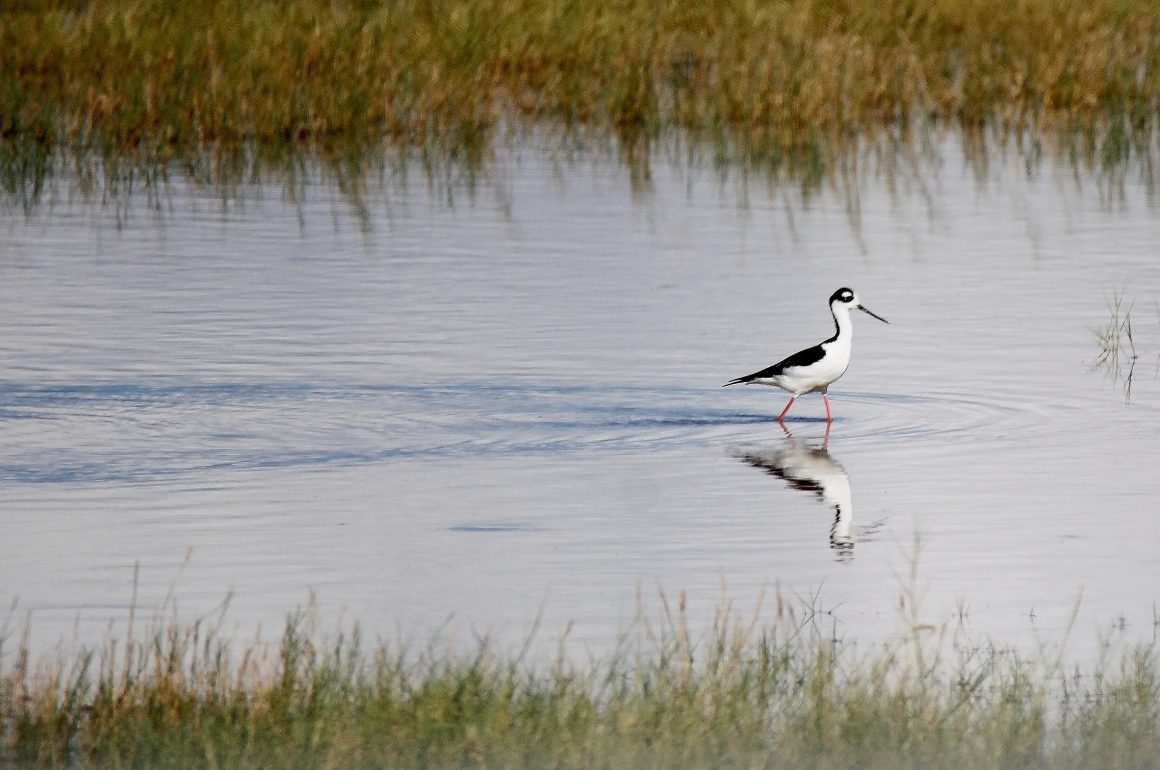
Or perhaps, “A Parade on Stilts”? “Stilts on Stilts”, even?
After 38 years of life in Mexico, I rarely have the sort of stomach trouble tourists supposedly get here. Truth to be told, I didn’t have much of that trouble even in my first years. My first trip into non-touristy Mexico, I was so worried about the Tijuana Two-Step that, let’s just say, I had the opposite problem for a week. So I decided to stop worrying about it, and haven’t since. (TMI, yet?)
But the week before last was an exception to this rule. It was bad enough that, for the first time in recent memory, I had to forego my Monday birding. Summer being the slow season for birds in my garden, the most interesting ones that I saw during the week were on my laptop’s wallpaper, which is a rotation of my own favorite bird photos. The photo I show above drew my eye, and made me reflect on the photogenicity of Stilts.
Stilts, of the Himantopus genus, are a worldwide group of birds that may or may not belong to six different species. I really hope the New World stilts, known as Black-necked Stilts, are a separate species (or two) from their main Old World counterpart, the Black-winged Stilt. That way we can keep their taxonomic name, which is Himantopus mexicanus. It’s always nice when Mexico gets its due.
Either way, all stilts are mostly-elegant birds, with highly editorial black-and white plumage that would delight Cruella De Vil. Oh, and then there is the one shared characteristic that I would not describe as elegant: those ridiculous, too-long, bubblegum-pink legs. It is that combination of the sublime and the ridiculous that make stilt photos so endlessly interesting, whether elegant or comical.
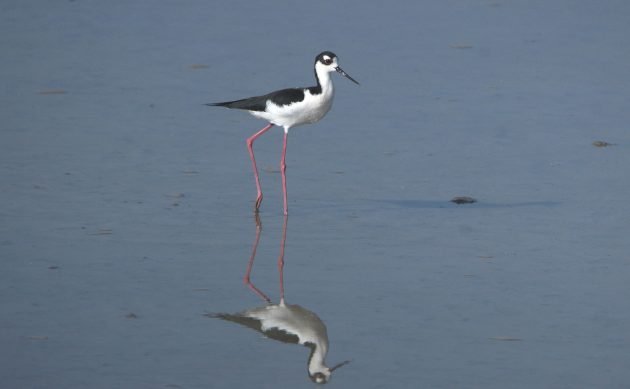
Very long legs.
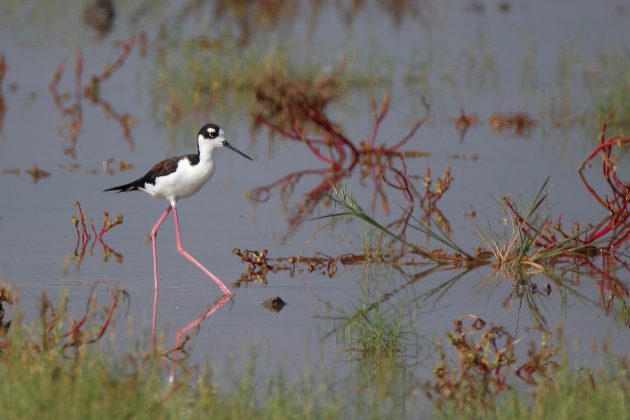
Ridiculously long legs.
Down here, Black-necked Stilts are year-round and numerous residents, as are their relatives, the American Avocets. They even stuck around as our large nearby lake dried up, because they will happily feed in only an inch or two of water. They are one of those photogenic but common birds that I always say I won’t photograph any more, and then I do. (I’m also talking to you, Vermilion Flycatchers.)
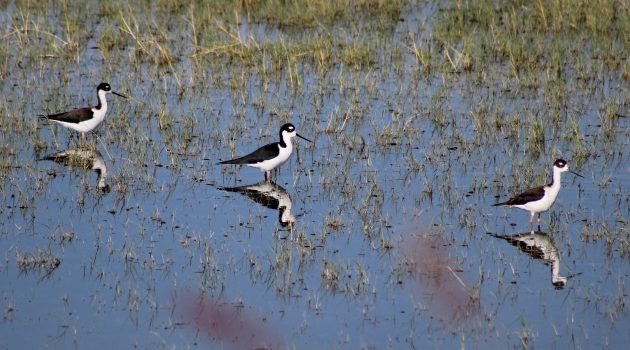
This is one of my very early photos, from back when I didn’t take many decent photos. But Black-necked Stilts make it easy.
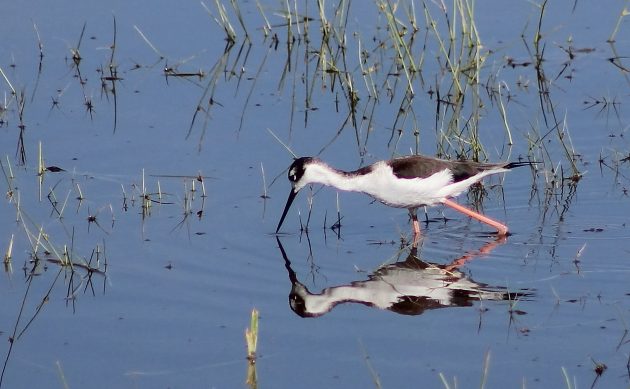
Somehow, Black-necked Stilts usually keep a perfect reflection with them.
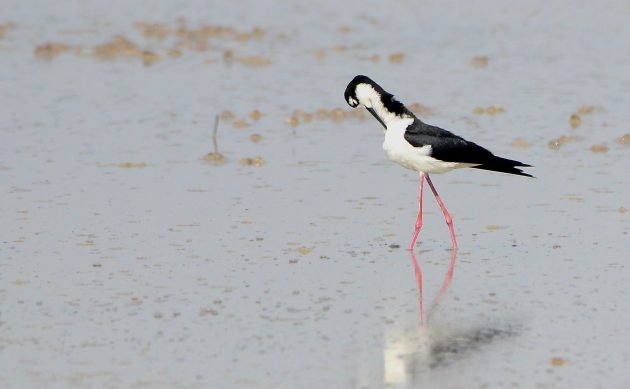
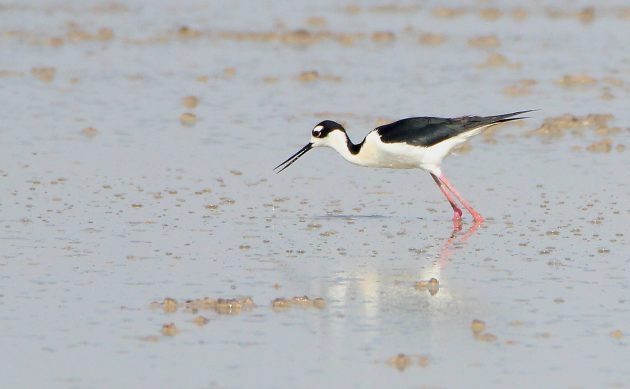
These recent shots are from when all that was left of my lake was some very wet mud. That is apparently not a big problem for Black-necked Stilts.
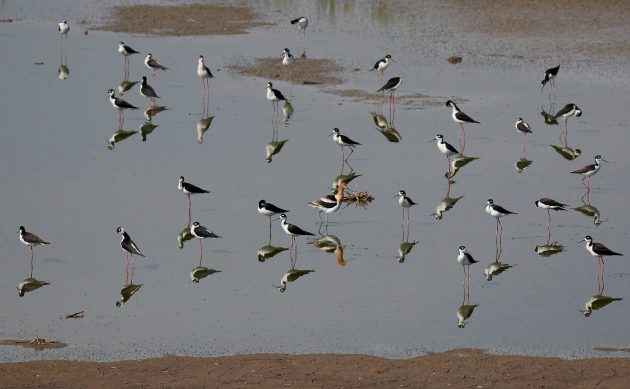
This is, perhaps, my favorite stilt photo. Believe me, it took me a long time to get them to distribute themselves so artistically around that one American Avocet.







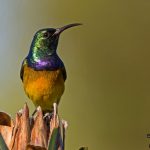


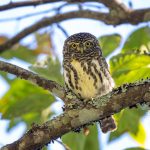


Leave a Comment